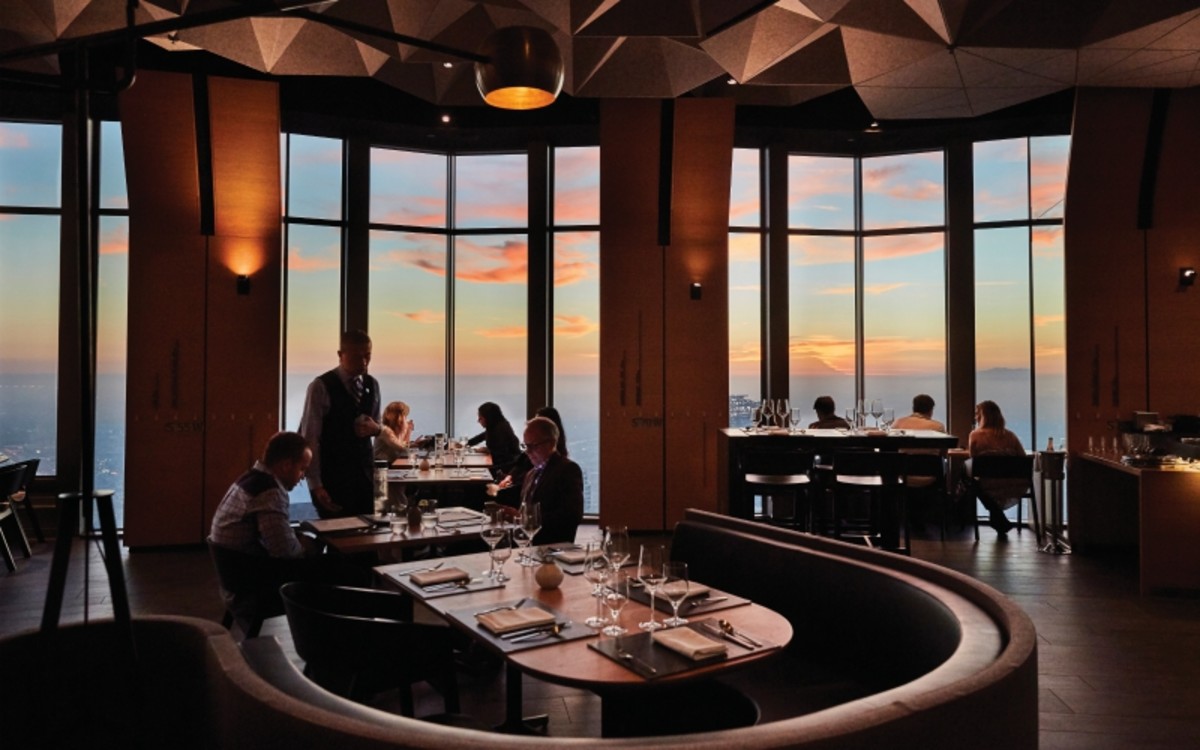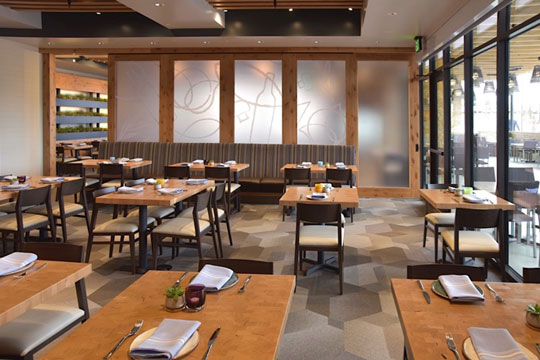Asian Restaurant ISB: A Must-Try Area for Food Lovers in Islamabad
Wiki Article
Savor Authentic Oriental Cuisine With a Pan-Asian Spin for a Cooking Adventure
Starting a culinary journey with genuine Asian food, boosted with a Pan-Asian spin, uses a distinct opportunity to check out the rich tapestry of tastes that specify the region's diverse culinary practices. This experience invites you to savor the elegant balance of preferences-- wonderful, salted, spicy, and sour-- integrated by aromatic herbs and flavors. Think of the cutting-edge combination of Thai curry and ramen or the unanticipated joy of sushi burritos. As you consider these enticing dishes, think about the cultural stories and historic influences that form them, each bite providing a story waiting to be uncovered.
Checking Out Pan-Asian Flavors
In the world of worldwide gastronomy, Pan-Asian cuisine sticks out for its remarkable diversity and the harmonious interplay of tastes from various Oriental cultures. This culinary technique commemorates the rich customs and unique components located across the continent, producing a tapestry of preferences that is both gratifying and fascinating. Key to Pan-Asian cuisine is its capacity to balance contrasting tastes-- pleasant, salted, spicy, and sour-- while highlighting the freshness and quality of each active ingredient.From the umami-rich soy sauce of Japan to the fiery chili peppers of Thailand, Pan-Asian food uses an extensive combination of flavors. These aspects are typically incorporated in inventive ways, boosting dishes with layers of complexity. For instance, the use of great smelling natural herbs such as lemongrass and cilantro, usual in Vietnamese and Thai food, includes a revitalizing brightness to meals, while the consolidation of coconut milk provides a creamy, rich appearance.
The emphasis on fresh fruit and vegetables and fragrant flavors makes sure that each meal is not only a feast for the taste but also for the senses. Pan-Asian food invites diners to start a culinary journey, discovering the huge and differed landscapes of Eastern gastronomy with every bite.
Combination Meals to Try
While Pan-Asian cuisine is celebrated for its typical flavors, the modern cooking landscape is progressively embracing fusion meals that blend these timeless elements with influences from other areas. This ingenious technique not just honors the rich heritage of Oriental cooking arts yet also introduces novel preference experiences that appeal to contemporary tastes.
An archetype of such a combination dish is the Korean-Mexican taco, where marinated bulgogi beef is wrapped in a warm tortilla, topped with kimchi and a spicy gochujang-infused salsa. This mix weds the bold, full-flavored tastes of Korea with the lively, fresh elements of Mexican cuisine. Likewise, sushi burritos have obtained popularity, integrating the fragile virtuosity of Japanese sushi with the passionate, hand-held ease of a burrito, often featuring combination components like tempura shrimp and avocado with a drizzle of wasabi mayo.
One more notable recipe is Thai curry ramen, which instills the velvety, aromatic spices of Thai curry into the soothing brew of typical Japanese ramen, producing an unified blend that tantalizes the detects. These combination dishes expand past plain uniqueness; they stand for a cooking discussion in between societies, motivating expedition and development in the globe of Pan-Asian food.
Important Components and Seasonings
To really appreciate Pan-Asian food, one need to comprehend the necessary ingredients and flavors that develop its foundation. This varied cooking design draws from an abundant tapestry of Asian traditions, using a harmonious mix of flavors and structures.Aromatic components are essential, with garlic, lemongrass, and ginger being ubiquitous throughout numerous Pan-Asian recipes. These ingredients give an aromatic base that enhances the complexity of tastes. Seasonings such as star anise, cardamom, and cinnamon introduce warmth and personality, resembling influences from regions like China and India.

Cooking Techniques and Tips
Understanding the art of Pan-Asian food calls for knowledge with its distinct cooking methods, each adding to the lively tapestry of tastes this cooking custom is commemorated for. Central to these methods is the stir-fry, a rapid cooking strategy that preserves the dietary honesty and dazzling shades of components. Utilizing a wok, the stir-fry approach permits for also warmth circulation, important for accomplishing the characteristic texture and taste balance of Pan-Asian dishes.An additional basic method is steaming, especially prevalent in Chinese cuisine. This mild technique preserves the natural flavors and nutrients of components, making it optimal for seafood and vegetables. Dumplings, a precious staple, often take advantage of steaming, causing soft, succulent appearances.
Barbecuing, additionally important, imparts smoky depths to meals such as Korean bulgogi or Japanese yakitori (pan asian dining Islamabad). This technique often includes marinading components, allowing tastes to penetrate deeply prior to cooking over an open flame or warmer
Last but not least, mastering the art of stabilizing tastes-- sweet, sour, salty, bitter, and umami-- is important. Effectively layering these components can raise a meal from regular to phenomenal, providing a facility and satisfying culinary experience that symbolizes the essence of Pan-Asian food.
Dining Experiences Worldwide
Around the world, Pan-Asian cuisine supplies an unparalleled eating experience, celebrated for its rich tapestry of flavors and lively presentations. This cooking sensation has gone beyond cultural boundaries, catching the hearts and tastes of food lovers worldwide. In multicultural cities fresh York, London, and Sydney, Pan-Asian restaurants serve as fusions where cooking practices from Thailand, Japan, China, and past converge, offering diners with a diverse mix of meals that highlight the area's diversity.The worldwide charm of Pan-Asian cuisine exists in its capability to offer both credibility and development. Chefs skillfully marry traditional ingredients such as lemongrass, soy sauce, and miso with modern strategies, causing recipes that are both acquainted and refreshingly new. This fusion allows diners to get started on a culinary journey that appreciates heritage while embracing modernity.
Furthermore, dining experiences are elevated with attentively designed environments that show the ethos of Pan-Asian visual appeals. From minimalist Japanese-inspired interiors to lively Thai-themed areas, each dining establishment provides a distinct ambiance that enhances the culinary offerings. Because of this, customers are not merely consuming a dish yet partaking in a cultural experience, making Pan-Asian eating a really international sensation.
Conclusion
The exploration of Pan-Asian food uses a profound understanding of the elaborate interplay of tastes and cooking practices throughout Asia. By accepting combination meals such as Thai curry ramen and sushi burritos, the cooking journey not only highlights the flexibility of traditional active ingredients but also Chinese food Islamabad showcases innovative modern-day techniques. This gastronomic journey, improved by important spices and cooking approaches, gives a special possibility to appreciate the social variety and cooking creativity that specify Pan-Asian cuisine on an international scale.Getting started on a culinary trip via authentic Oriental cuisine, enhanced with a Pan-Asian spin, provides an unique chance to explore the rich tapestry of flavors that define the region's varied cooking practices.In the world of global gastronomy, Pan-Asian cuisine stands out for its amazing diversity and the harmonious interaction of tastes from various Eastern cultures. Secret to Pan-Asian food is its capacity to balance different tastes-- sweet, salty, spicy, and sour-- while highlighting the quality and high quality of each active ingredient.

Report this wiki page